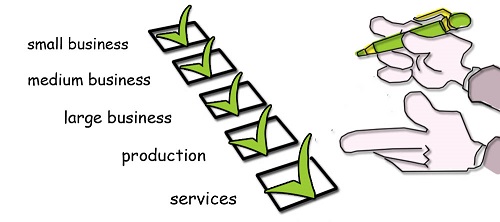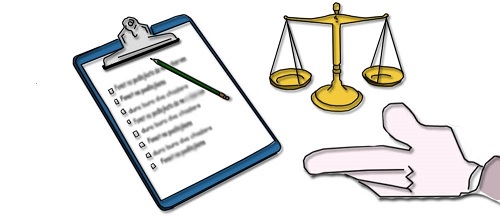1 Environmental approach T 17
1.1 Background
Evolution of environmental standards
Other environmental proverbs and quotes

The first laws in France on environmental protection appeared at the beginning of the 19th century (such as the decree of October 15, 1810 on factories and workshops). The concept of environmental protection is one of the pillars of sustainable development.
The pollution prevention approach is a must for every responsible companya structure that satisfies a need.
The first edition of the international standard of an environmental management systemset of processes allowing the achievement of the environmental objectives (see also ISO 14001, 3.1.2) ISO 14001 appeared in 1996. ISOInternational Organization for Standardization comes from the Greek “isos” (equal). The ISOInternational Organization for Standardization (International Organization for Standardization) was created in 1947.
The 2004 revision of the standard is distinguished by:
- improved compatibility with ISO 9001
- greater clarity of the text
- greater emphasis on continual improvement
- strengthening the conformity evaluation (legal and regulatory)
- further simplification of documentation
The new version of the ISO 14001 standard (second revision) was published in September 2015: Environmental management systems - Requirements with guidance for use.
The main novelties are:
- a new structure (higher level)
- risk-based thinking (external and internal issues, opportunities)
- management commitment to ensure compatibility between the strategic direction of the company and the policy and environmental objectives
- management fully assumes its responsibility (leadership) of the performance of the environmental management system
- fewer mandatory documented procedures (documented information to maintain), falling to 8 from 12
- concept of preventive action is replaced by actions to address risks
- terms "documented procedure" and "record" are replaced by "documented information"
- added requirements related to the life cycle and outsourced processes
1.2 Scope
Scope of the environmental management system

The ISO 14001 standard (Environmental management systems – Requirements with guidance for use) is generic as it can be applied to the management systemset of processes allowing objectives to be achieved (see also ISO 9000, 3.5.3) of any company, without limitations on size, activity or type.
This is a voluntary international standard that allows for certification by an accredited body.
To achieve this, it is sufficient that the environmental management systemset of processes allowing the achievement of the environmental objectives (see also ISO 14001, 3.1.2) (EMSEnvironmental Management System) :
- should be:
- determined
- implemented
- maintained
- improved
- meet the requirements of the ISO 14001 standard
ISO 14001 applies to those environmental aspects that top managementgroup or persons in charge of the organizational control at the highest level (see also ISO 9000, 3.1.1) believes it can control or influence.
1.3 Steps and PDCA
Preparation and implementation of your EMS, PDCA cycle for continual improvement

A well-prepared approach is halfway to success
The approach to implementing an environmental management systemset of processes allowing the achievement of the environmental objectives (see also ISO 14001, 3.1.2) follows several steps. An example of preparation is shown in figure 1-1.
.gif)
Figure 1-1. EMS preparation
Step 1 contains the determination of the needs and expectations (requirements) of stakeholdersperson, group or organization that can affect or be affected by a company (see also ISO 26000, 2.20):
- staff
- customers, consumers
- competitors
- shareholders, investors
- external providers (suppliers, subcontractors, partners)
- organizations and branch associations
- statutory and regulatory authorities
The involvement of top managementgroup or persons in charge of the organizational control at the highest level (see also ISO 9000, 3.1.1) at its highest level is truly indispensable. The advice of a consultant is often solicited. Determining the current status of the management systemset of processes allowing objectives to be achieved (see also ISO 9000, 3.5.3) (or what exists of it) would be welcome at this stage. An external certification body is chosen.
One of the key questions that comes up quickly (step 2) is the need for this decision. If this is not really necessary or if the estimated costs of the certification approach exceed the available resources, it is better to dismiss the idea immediately.
The benefits of implementing an environmental management systemset of processes allowing the achievement of the environmental objectives (see also ISO 14001, 3.1.2) are often:
- an improved image of the company
- being one step ahead of the competition
- enhanced environmental protection
- environmental performance evaluated and communicated
- better emergency preparedness
- increased confidence of stakeholders
- reduced energy consumption
- staff who are aware, consulted, motivated and proud
- reduced insurance costs
- commitment profitable for all
- good practices are valorized:
- selective sorting of waste
- reduced packaging
- optimized water consumption
- formalization of knowledge
- process control
- compliance obligations up-to-date
The benefits of the certification of an environmental management systemset of processes allowing the achievement of the environmental objectives (see also ISO 14001, 3.1.2) are often:
- new customers
- increased market share
- an increase in sales
- better financial performance
More than one and a half million businesses worldwide cannot be wrong!
Coca-Cola implemented ISO 14001 to reduce its water consumption and improve its environmental efficiency. The implementation of water-saving technologies and employee awareness programs has significantly reduced water consumption.
Coca-Cola has recorded substantial savings, demonstrating the positive impact of ISO 14001 on financial performance and its commitment to sustainability
The internalization of the spirit of the principles and requirementsexplicit or implicit need or expectation (see also ISO 9000, 3.6.4) of an ISOInternational Organization for Standardization standard significantly improves the overall performancemeasurable and expected results of the management system (see also ISO 9000, 3.7.8) of your business, especially when it is not considered as a constraint.
The third step shall determine whether this approach receives the approval of the staff. A communication campaign is launched in-house on the objectives of an environmental management systemset of processes allowing the achievement of the environmental objectives (see also ISO 14001, 3.1.2) (EMSEnvironmental Management System). The staff is aware and understands that, without their participation, the project cannot succeed.
Have confidence: success will come with the involvement and effort of all!
Define the vision (what we want to be), the mission (why we exist) and the business plan of the company. The next step (4) begins with the establishment of an outline of the environmental policy and environmental objectives. If you do not have a copy of the ISO 14001 standard, now is the time to get it.
Planning is the last step (5) of the project preparation for obtaining ISO 14001 certification. A reasonable period is between 6 to 12 months (each company is unique and specific).Top managementgroup or persons in charge of the organizational control at the highest level (see also ISO 9000, 3.1.1) commitment is formalized in a document communicated to all staff. A person is appointed as project leader for obtaining ISO 14001 certification.
The establishment and implementation of an ISO 14001 environmental management systemset of processes allowing the achievement of the environmental objectives (see also ISO 14001, 3.1.2) are shown in figure 1-2.
.jpg)
Figure 1-2. EMS implementation
Step 1 aims to identify and determine the processes, interactions, owners and responsibilities. The outline of certain documentsany support allowing the treatment of information (see also ISO 9000, 3.8.5) is written down. The needs, expectations and requirementsexplicit or implicit need or expectation (see also ISO 9000, 3.6.4) of all stakeholdersperson, group or organization that can affect or be affected by a company (see also ISO 26000, 2.20) are analyzed. With the participation of as many people available the first drafts of the various documentsany support allowing the treatment of information (see also ISO 9000, 3.8.5) (job descriptions, procedures, work instructions, processactivities that transform inputs into outputs (see also ISO 9000, 3.4.1) sheets) are written.
In step 2 the resources to achieve the environmental objectives are set. Planning tasks, responsibilities and time frames are established. Internal staff and subcontractors are aware of significant environmental impacts. Training of internal auditorseveryone who is trained to carry out audits (see also ISO 19011, 3.8) is taken into account.
Step 3 allows you to define and implement methods to measure the effectiveness and efficiencyfinancial relationship between achieved results and resources used (see also ISO 9000, 3.7.10) of each processactivities that transform inputs into outputs (see also ISO 9000, 3.4.1) (indicatorsvalue of a parameter, associated with an objective, allowing the objective measure of its effectiveness (see also FD X50-171, 2.1) ). Internal audits are used to evaluate the degree of implementation of the systemset of interacting processes (see also ISO 9000, 3.5.1) (identification of environmental aspects and impacts, compliance obligations).
Nonconformities of all kinds are listed in step 4. An outline of the different wasteanything that adds cost but no value is established. A categorization of corrective actionsaction to eliminate the causes of nonconformity or any other undesirable event and to prevent their recurrence (see also ISO 9000, 3.12.2) is introduced. Emergency situations with potential impacts on the environment are listed. The responses (actions and reactions) to emergency situations are established and documented.
A first meeting with the tools and applications of the continual improvement process is made in Step 5. Major riskslikelihood of occurrence of a threat or an opportunity (see also ISO Guide 73, 1.1) are determined, risklikelihood of occurrence of a threat or an opportunity (see also ISO Guide 73, 1.1) management objectives are planned and opportunities for improvement in environmental performancemeasurable results of the environmental management system (see also ISO 14001, 3.4.11) are found. Activities related to the determined significant environmental aspects are planned and implemented. A legal watch is undertaken. Internal and external communicationexchange of information is established and formalized.
To conduct the pre-audit of the EMS (step 6) documentation is checked and approved by the appropriate people. A management reviewperiodic survey carried out by top management of the management system for its continual improvement allows evaluation of applicable compliance obligations. The environmental policystatement by top management allowing the establishment of environmental objectives (see also ISO 14001, 3.1.3) and objectives are finalized. An environmental manager from another company or a consultant can provide valuable feedback, suggestions and recommendations.
When the systemset of interacting processes (see also ISO 9000, 3.5.1) is accurately implemented and followed, the certification of the EMS by an external body is a breeze, a formality (step 7).
An example of a certification project plan with 27 steps is shown in annex 01. 
An appropriate method for evaluating the performancemeasurable and expected results of the management system (see also ISO 9000, 3.7.8) of your environmental management systemset of processes allowing the achievement of the environmental objectives (see also ISO 14001, 3.1.2) is the RADAR logic model of excellence EFQM (European Foundation for Quality Management), with its nine criteria and overall score of 1000 points.
The Deming cycle (figure 1-3) is applied to control any processactivities that transform inputs into outputs (see also ISO 9000, 3.4.1). The PDCA cycle (Plan, Do, Check, Act) is a universal basis for continual improvementprocess allowing the improvement of the global performance of the organization (see also ISO 9000, 3.3.2).
.jpg)
Figure 1-3. Deming cycle
- Plan – define context, issues and processes, establish environmental policy and objectives, and demonstrate leadership (clauses 4, 5 and 6)
- Do – realize, develop, implement processes, demonstrate leadership, control the life cycle, bring support and respond to emergencies (clauses 5, 7 and 8)
- Check – Compare, verify, analyze, evaluate, demonstrate leadership, conduct audits and management reviews (clauses 5 and 9)
- Act – adapt, demonstrate leadership, treat nonconformities, react with corrective actions or find new improvements (new PDCA cycle), (clauses 5 and 10)
